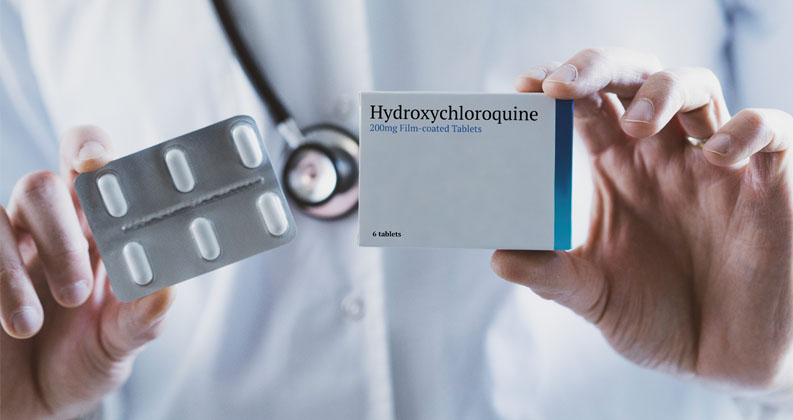
Lupus is a potentially debilitating illness and an auto-immune disease. It affects the joints in your body and causes a lot of swelling and pain. While there are numerous medications available to treat the symptoms of lupus, one of the most common is hydroxychloroquine, which goes by the brand name Plaquenil. Not all lupus medications work quickly, but if you’ve ever asked yourself how long it takes Plaquenil to work, just know that it usually takes one to three months until you start feeling better.
What Is Lupus?
Lupus involves your immune system and can damage any part of your body. Think about your immune system as a system that fights off invaders, including germs, bacteria, and viruses. In a healthy body, your immune system can fight off these invaders regularly, but when you have lupus, your immune system doesn’t know the difference between the invaders that attack your body and your body’s healthy tissue. The body can start attacking the healthy tissue, causing inflammation that can eventually damage the body’s various organs.
For reasons that are unknown to medical professionals, most lupus victims are female. In fact, 9 out of every 10 lupus patients are, in fact, women, and worldwide more than 5 million people have some form of the disease. Women in the 15 to 44 age category are the most likely to develop lupus, as are women who are African American, Hispanic, Asian, Native American, and Pacific Island, women. That being said, if you have a family member with lupus, it is more likely that you will eventually have it as well.
Lupus is not contagious, and you cannot get it through sexual contact. Once you have lupus, there is no way for you to spread it to someone else. Unfortunately, no one knows the exact reason why some people get lupus, although some scientists believe certain things can affect your odds of getting lupus, including:
● Hormones, particularly estrogen
● Genetics/family history
● Environmental factors, such as viruses, stress, and even certain medications
Overall, roughly 1.5 million people in the United States alone have some form of lupus, which includes cutaneous lupus, systemic lupus erythematosus, neonatal lupus, and drug-induced lupus. While a cure for the disease doesn’t exist because we do not yet know what causes it, lupus treatment usually involves treating the symptoms and understanding what might trigger flare-ups in your own body. To diagnose lupus, doctors usually perform urine tests and/or blood tests, but it’s also important for you to share all of your symptoms with your doctor so that the best treatment plan can be developed.
The most common treatment plans utilize various medications plus several lifestyle changes, one of which is to always use sunscreen when you are outdoors.
Taking Plaquenil
Plaquenil is the brand name for the drug hydroxychloroquine, which is a disease-modifying anti-rheumatic drug, or DMARD. DMARDs actually slow down your lupus and can relieve pain and swelling and prevent damage to your joints. While it may take one to three months to start working, Plaquenil can help make your symptoms a little less serious for up to a full year. You can take Plaquenil alone or with other medications meant to relieve your pain and stiffness.
The way Plaquenil works is actually very simple. Since it’s your immune system that is basically attacking your body, not protecting it as it should, Plaquenil slows down the immune system so that it can’t attack. Plaquenil is a pill that is meant to be taken one to two times per day, and it has to be taken with either milk or food. There are different dosages of the drug, and your doctor will base the dosage you need mostly on your body weight.
If you forget to take a scheduled dose of Plaquenil, you can double up on the next dosage, but you should still wait until your scheduled time to take it and then only take the usual dose. While you’re taking Plaquenil, your doctor will regularly check your joints to determine how much swelling you have to determine if Plaquenil is right for you. In most cases, you’ll be taking a tablet with 200 mg of hydroxychloroquine once or twice a day.
One important tip if your doctor recommends taking Plaquenil is to share all of the other medications you’re taking. This is imperative and should include everything you take regularly, not just prescription medications but also herbal supplements, vitamins, and birth control pills. Since you don’t know precisely what might interact with Plaquenil, discussing it with your doctor is what’s best so that you can be certain the Plaquenil won’t ever interact with anything else you take regularly.
Are There Side Effects of Taking Plaquenil?
As with any other type of medication, Plaquenil can have side effects. The most common side effects are:
● Nausea
● Vomiting
● Diarrhea
● Dizziness
● Headache
● Black spots before your eyes
● Skin rashes
The good news is that in most cases, your body will get used to the medication, and a lot of these symptoms will disappear. Sometimes, a lower dosage may stop the side effects, but that will have to be determined by your physician. Keep in mind that Plaquenil remains in the body for roughly three months, and it might take this long for your side effects to go away. Just be patient if you do have some of these side effects, and make sure you discuss them with your doctor to ensure that they’re not caused by something else. Your doctor will be able to tell you for sure why you’re experiencing the side effects.
Yet another side effect that’s very rare is serious eye problems. Less than one person in every 5,000 will develop some type of eye problem while taking Plaquenil, which usually involves your retina. While taking Plaquenil, you’ll want to make sure you visit an eye doctor once a year to make sure everything is alright with your eyes. If the eye doctor does find something, it often goes away when found early, but you’ll likely have to stop taking the medication as well. If you already have problems with your retinas, discuss that with your doctor to make sure Plaquenil will work for you.
If you are pregnant or breastfeeding, always let your doctor know because Plaquenil may not be right for you if this is the case. For the most part, Plaquenil doesn’t interfere with any type of vaccinations you might need to take, so it’s usually fine to take Plaquenil even if you have some sort of vaccination planned. Basically, you’ll want to tell your doctor about any medical conditions you have, any medications you’re on, and anything you take that is over the counter. In most instances, you’ll still be able to take Plaquenil, but it’s still best to make sure that your doctor approves it.
Plaquenil for Malaria?
Here’s something else you should know about Plaquenil: it was originally developed as an anti-malaria drug. If you travel to certain places where malaria is a possibility, it’s good to take this drug to prevent malaria in the first place. More often than not, your doctor will recommend taking the drug once a week for two weeks before you leave the country and for four to eight weeks after you get home. For antimalarial purposes, you take Plaquenil once a week. To fight autoimmune diseases such as lupus and rheumatoid arthritis, you need to take it daily according to your doctor’s instructions.
Also, when taking Plaquenil, you should take it whole and on a full stomach; in other words, always take it with either food or milk so that you don’t get an upset stomach. Never crush the pill because it can have a very bitter taste to it. After you take Plaquenil for a while, your doctor may increase the dosage if you seem to be tolerating it well. In addition, if you’re taking either antacids or any type of medication for diarrhea, you’ll need to take your Plaquenil either four hours before taking these medications or four hours afterward. This is to make sure your body is fully absorbing the hydroxychloroquine.
Finally, never stop taking your Plaquenil without talking to your doctor first. If you’re taking this medication to get rid of an infection, the infection may return if you stop taking the medication without adhering to the doctor’s instructions. If you’re taking Plaquenil for another reason, stopping it too soon can lead to an infection. This is why it is crucial that you listen to your doctor and share the details of any symptoms or concerns you might have.
Autoimmune diseases attack your immune system and cause a lot of problems with pain and stiffness in your joints. Hydroxychloroquine, or Plaquenil as it is known, is a drug specially made to treat the symptoms of numerous autoimmune diseases. It is taken once or twice a day and even though it can take up to three months to start to notice a difference, the drug will keep working for up to one year to help you feel much better regardless of the autoimmune disease you have.







